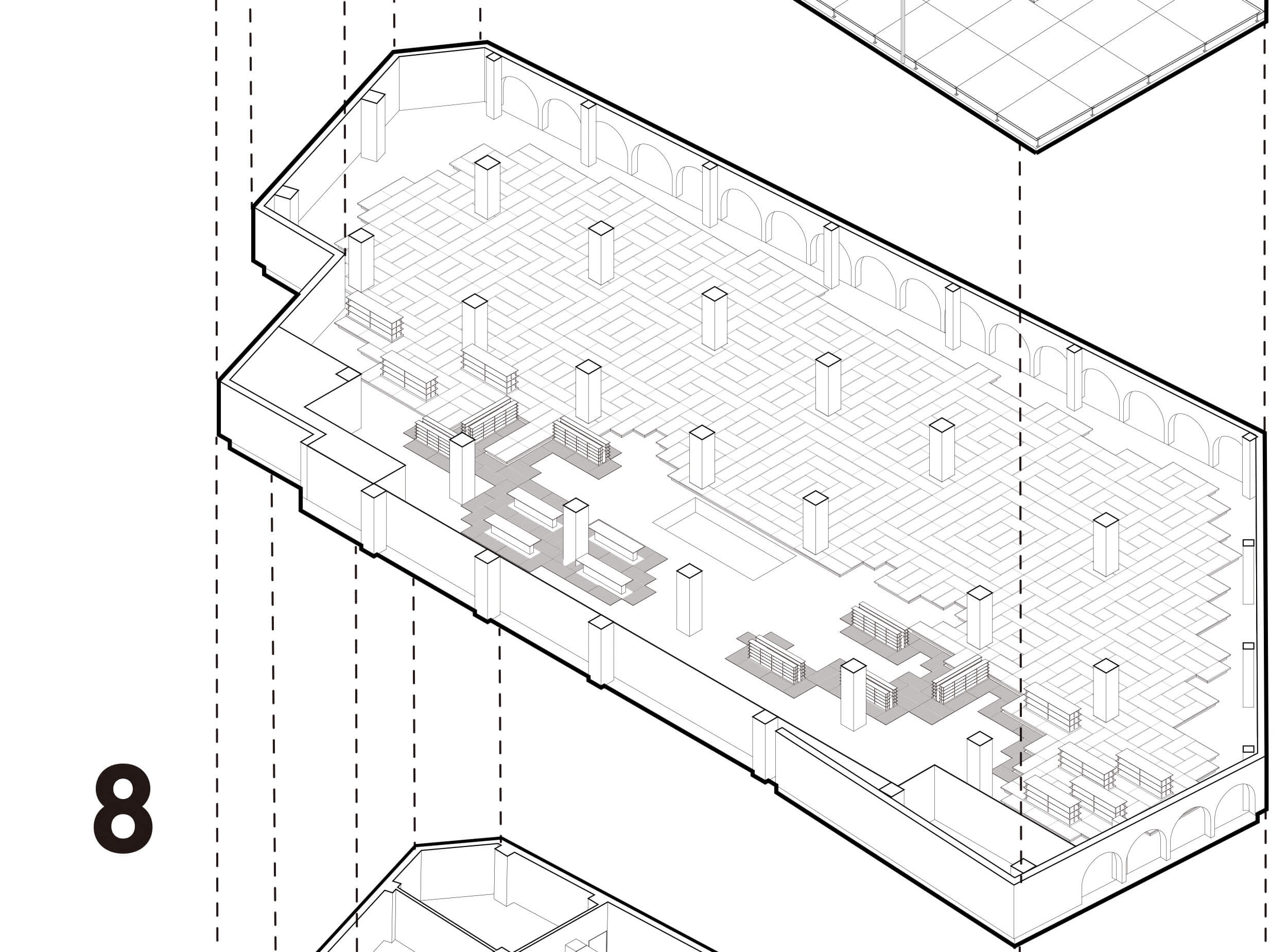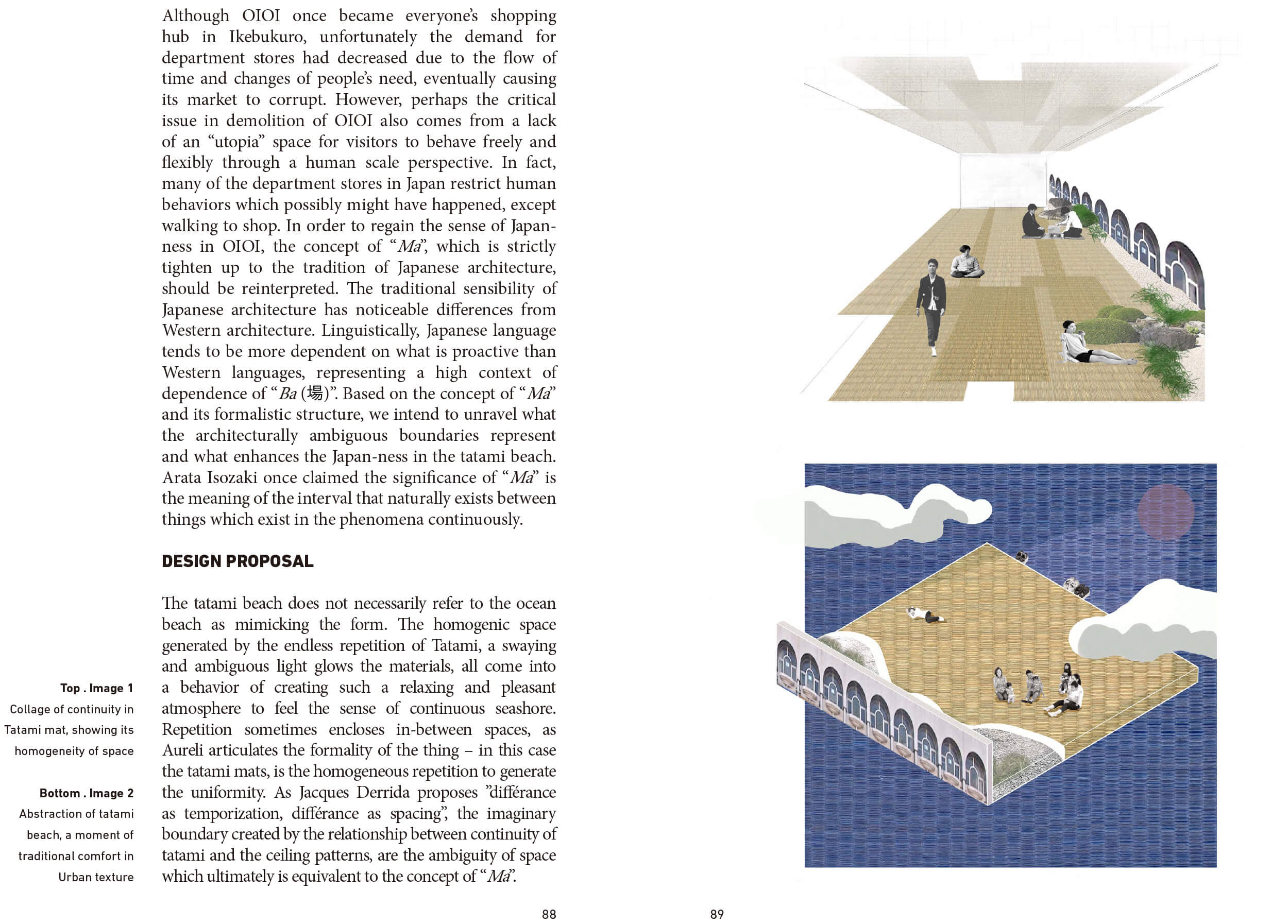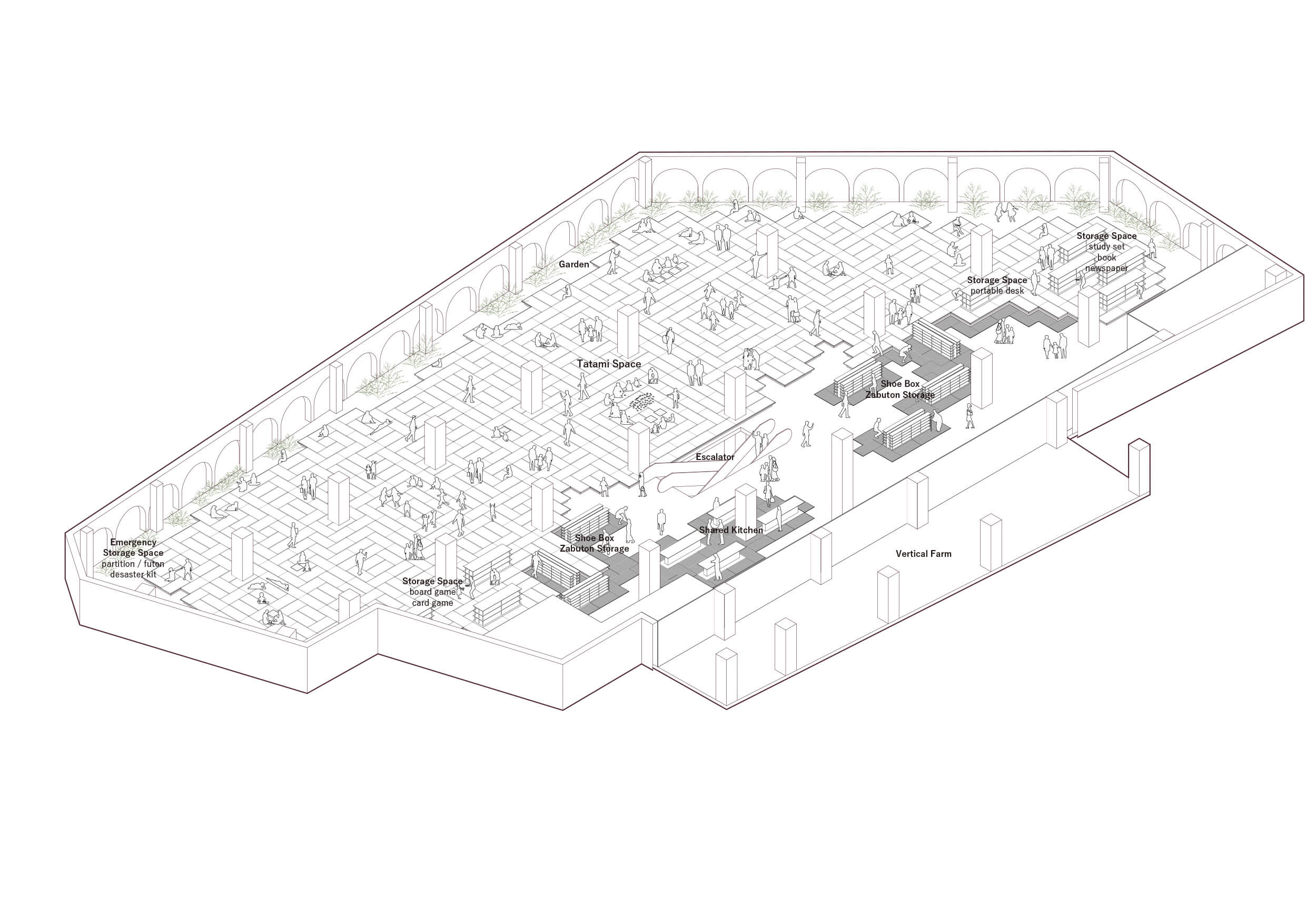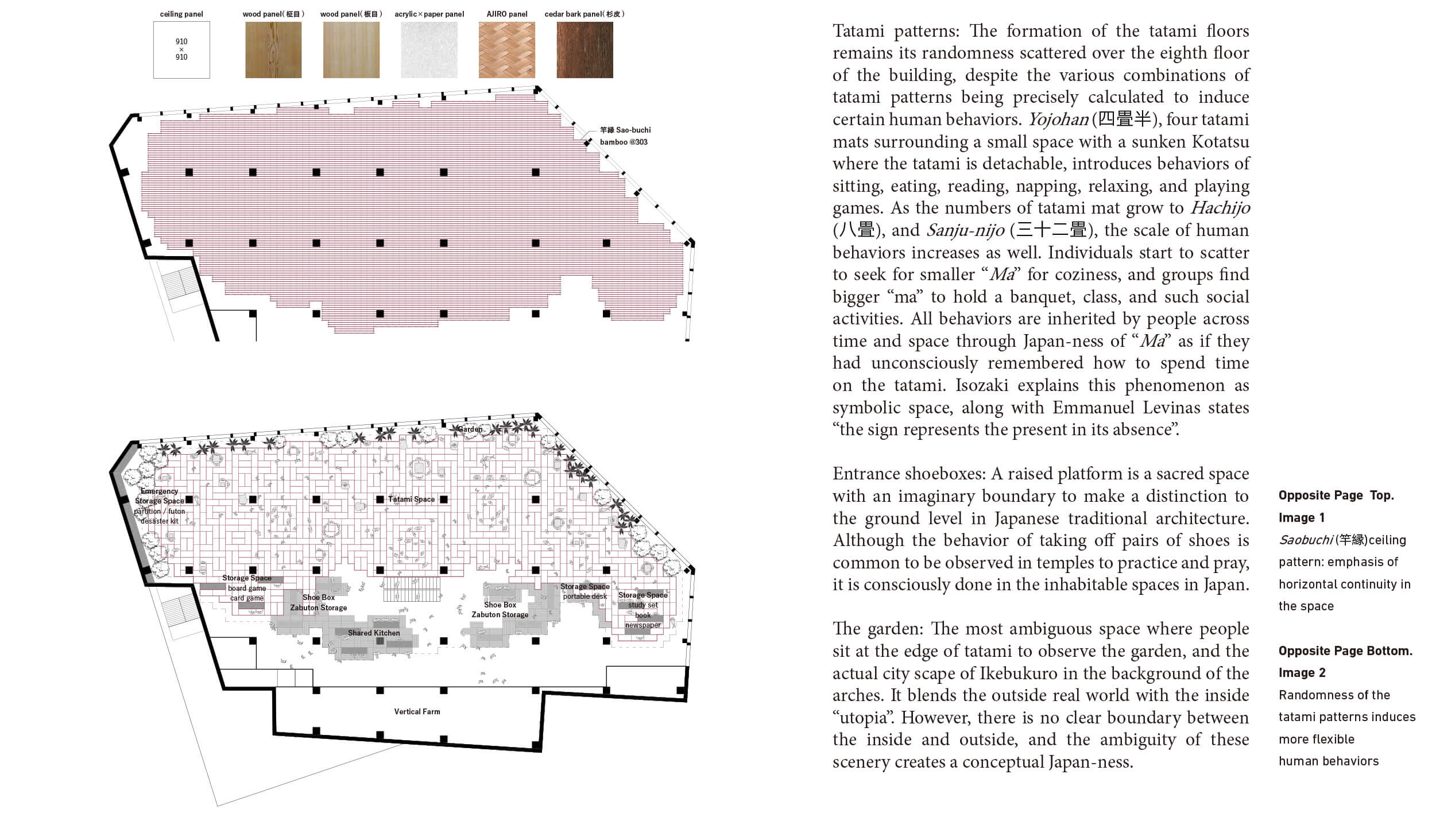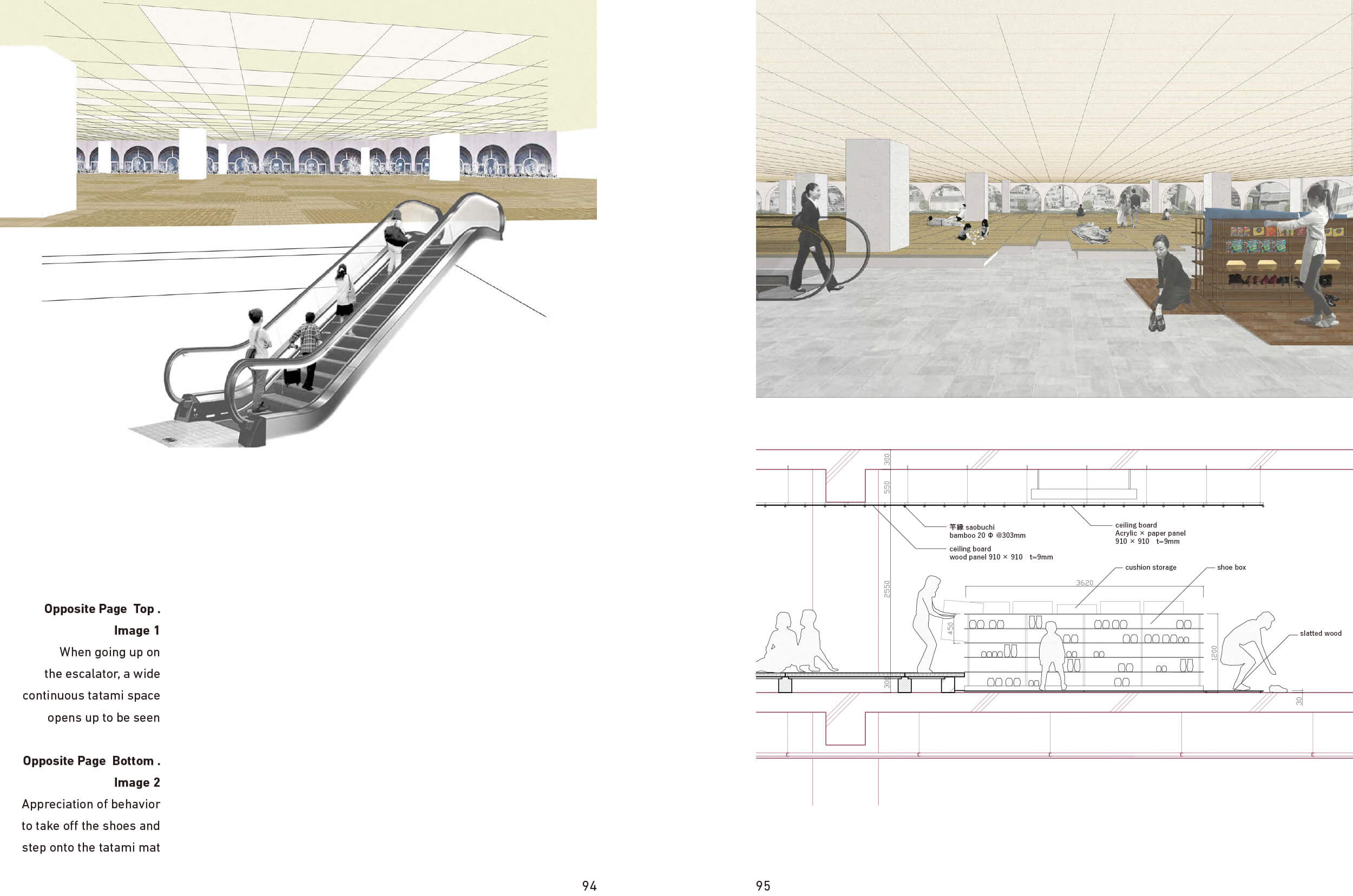ENCLAVE
Architect and educator – Pier Vittorio Aureli describes the political and architectural ideology in landscape and forms of urban economy in his book The Possibility of an Absolute Architecture. Aureli investigates to what extent some architecture could classify as some kind of methodology, visualizing architectures as archipelagos to conceptually categorize the formality of an architecture. The architecture of the archipelago must be an absolute architecture, as it is clearly subdivided in the city, in other words an “enclave” determined by the unbalanced economic exploitation. In contray, an ambiguity in space is explored in Arata Isozaki’s concept of “Ma (間)”, in his curated arts and architectural exhibition of MA: Space-Time in Japan Exhibition in 1979. Isozaki defies the Western logic of isolation of space and time, and fundamentally points out the significant sense of homogeneity in things. That being said, he pictures architecture as an event, or a phenomenon that encompasses historical context and interactions of time in between the spaces.
In 2021, the iconic department store closed in the midst of busy traffic, which was Marui (OIOI) at the west exit of Ikebukuro station. Ikebukuro was originally known for the black market (闇市) where the illegally installed street vendors were the artery of residents after the World War II, yet most of them are demolished and transformed into massive department store buildings today.
Although OIOI once became everyone’s shopping hub in Ikebukuro, unfortunately the demand for department stores had decreased due to the flow of time and changes of people’s need, eventually causing its market to corrupt. However, perhaps the critical issue in demolition of OIOI also comes from a lack of an “utopia” space for visitors to behave freely and flexibly through a human scale perspective. In fact, many of the department stores in Japan restrict human behaviors which possibly might have happened, except walking to shop. In order to regain the sense of Japan- ness in OIOI, the concept of “Ma”, which is strictly tighten up to the tradition of Japanese architecture, should be reinterpreted. The traditional sensibility of Japanese architecture has noticeable differences from Western architecture. Linguistically, Japanese language tends to be more dependent on what is proactive than Western languages, representing a high context of dependence of “Ba (場)”. Based on the concept of “Ma” and its formalistic structure, we intend to unravel what the architecturally ambiguous boundaries represent and what enhances the Japan-ness in the tatami beach. Arata Isozaki once claimed the significance of “Ma” is the meaning of the interval that naturally exists between things which exist in the phenomena continuously.
DESIGN PROPOSAL
The tatami beach does not necessarily refer to the ocean beach as mimicking the form. The homogenic space generated by the endless repetition of Tatami, a swaying and ambiguous light glows the materials, all come into a behavior of creating such a relaxing and pleasant atmosphere to feel the sense of continuous seashore. Repetition sometimes encloses in-between spaces, as Aureli articulates the formality of the thing – in this case the tatami mats, is the homogeneous repetition to generate the uniformity. As Jacques Derrida proposes ”différance as temporization, différance as spacing”, the imaginary boundary created by the relationship between continuity of tatami and the ceiling patterns, are the ambiguity of space which ultimately is equivalent to the concept of “Ma”.
Tatami patterns: The formation of the tatami floors remains its randomness scattered over the eighth floor of the building, despite the various combinations of tatami patterns being precisely calculated to induce certain human behaviors. Yojohan (四畳半), four tatami mats surrounding a small space with a sunken Kotatsu where the tatami is detachable, introduces behaviors of sitting, eating, reading, napping, relaxing, and playing games. As the numbers of tatami mat grow to Hachijo (八畳), and Sanju-nijo (三十二畳), the scale of human behaviors increases as well. Individuals start to scatter to seek for smaller “Ma” for coziness, and groups find bigger “ma” to hold a banquet, class, and such social activities. All behaviors are inherited by people across time and space through Japan-ness of “Ma” as if they had unconsciously remembered how to spend time on the tatami. Isozaki explains this phenomenon as symbolic space, along with Emmanuel Levinas states “the sign represents the present in its absence”.
Entrance shoeboxes: A raised platform is a sacred space with an imaginary boundary to make a distinction to the ground level in Japanese traditional architecture. Although the behavior of taking off pairs of shoes is common to be observed in temples to practice and pray, it is consciously done in the inhabitable spaces in Japan.
The garden: The most ambiguous space where people sit at the edge of tatami to observe the garden, and the actual city scape of Ikebukuro in the background of the arches. It blends the outside real world with the inside “utopia”. However, there is no clear boundary between the inside and outside, and the ambiguity of these scenery creates a conceptual Japan-ness.
